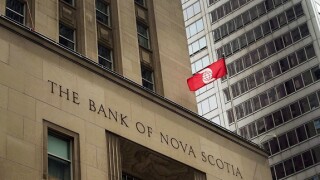Canada
-
CPPIB Capital rounded off its sterling curve on Friday after only making its debut in the currency in January. The Canadian borrower aims to maintain a regular presence in this market as a result of its long-term investments in the UK.
-
Market participants re-examined the prospects for covered bond supply in sterling this week in the wake of two deals from SSA borrowers in the currency. Spreads have tightened and issuance conditions have improved but that will have to be balanced against bargain basement priced funding available from central banks, bankers said on Thursday.
-
The World Bank returned to the Canadian dollar on Wednesday with a new C$1.5bn ($1.11bn) sustainable development bond, as movements in the cross currency basis swap, as well as the spread to Canadian Mortgage Bonds (CMBs), allowed the supranational to print the largest SSA Maple deal since last July.
-
Trading levels given are bid-side spreads versus mid-swaps and/or an underlying benchmark and bid-yields from the close of business on Monday, June 8. The source for secondary trading levels is ICE Data Services.
-
A pair of foreign banks mandated senior unsecured Australian dollar transactions on Monday: Sumitomo Mitsui Banking Corp is out with initial price thoughts through its Sydney branch, while the Canadian Imperial Bank of Commerce is preparing a Kangaroo benchmark.
-
Alberta made its first foray into the Norwegian kroner market on Thursday — the same day that S&P placed the province’s credit outlook on negative.
-
Bank of Nova Scotia was looking to test investors’ appetite for one of first additional tier one transactions of the coronavirus pandemic on Thursday, helping to set a reference point for pricing in the asset class.
-
Banks are bounding back into the Kangaroo market. On Wednesday, BNP Paribas jumped in to sell the first syndicated Australian dollar senior non-preferred deal since the start of the Covid-19 crisis, later that day the Bank of Nova Scotia announced plans to join the fray with a mandate for a three year bail-inable deal.
-
A quartet of SSAs borrowed a combined A$940m ($613.4m) into the Kangaroo market this week, spurring the SSA Aussie dollar market on to its best monthly volume in over nine months.
-
Dollars was the favoured currency for public sector borrowers for the second week running this week, giving attractive funding conditions for euro borrowers amid strong investor demand, particularly in the 10 year part of the curve.
-
Belgium took advantage of more attractive funding conditions in dollars versus euros and strong demand at the 10 year point of the curve to sell its first dollar bond since 2017 on Tuesday. SSA supply in dollars will continue on Wednesday with the Asian Infrastructure Investment Bank and Nederlandse Waterschapsbank bringing socially responsible deals.
-
Belgium is set to issue its first dollar bond since 2017 as euro funders continue to take advantage of the attractive funding conditions in the currency, with three other public sector borrowers also in the market for dollars.











